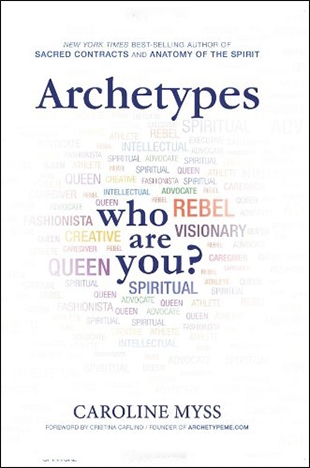"Archetypes are not like angels or inner guides. They are not entities with which we have some sort of interactive relationship. It's a common belief that we can communicate with angels and spiritual guides through prayer and that they, in turn, can intervene in our life crises through personal guidance. The operative words here are personal guidance. Archetypes are neither responsive to prayer nor do they provide personal guidance. They are impersonal patterns of consciousness that form the essence of human nature. However, archetypes are an active part of our consciousness, continually interacting with the sparks of energy we generate. These cosmic psychic patterns then upgrade old myths into more contemporary dress to keep up with social evolution. For example, we still have the Knight in Shining Armor in our feminine myths and dreams, but his armor today is more likely to consist of an Armani suit and a Mercedes-Benz than a sword and a shield. Myths need to reflect the wardrobe of the times. But take the costume off, and you'll see the same story told over and over again.
"One way archetypes communicate with us is by energizing or animating our myths and fantasies. Some people imagine themselves as Leaders, for example. Abraham Lincoln was one such individual. He knew even in his youth that he was born for some great purpose, and this feeling drove him throughout his childhood to pursue his studies under very difficult conditions and eventually to become a lawyer. But that occupation felt inadequate to him, so he decided to run for political office, as he imagined himself a political Leader. That inner image was animated or energized when Lincoln pictured himself in Congress. Once Lincoln entered politics, he knew he was in alignment with his calling, his life purpose. Not until the Civil War, however, when he faced the challenge of saving the Union, did he realize he was fulfilling the reason for which he was born.
"Archetypes can come to us in the form of imagery in our dreams and daydreams. Coincidences and synchronicity also represent archetypal activity. What Carl Jung called synchronicity refers to meaningful coincidences of causally unrelated events. The cosmic forces that organize coincidences and synchronistic happenings intrigued Jung, as it was obvious that some moments in our lives contain such events while others do not. He surmised that we must be participants in some way in the creation of these events through the power of our psyche and archetypal patterns, but no one, not even Jung, has determined the precise alchemical recipe. Still, we view synchronous events as having greater significance than the ordinary events of life, though we are left to discern the meaning of the experiences ourselves — or more accurately, to project a meaning onto them. A childhood friend pops into your mind, someone you haven't thought of in 30 years, and then an hour later, as you're crossing a street, there's the long-forgotten friend coming toward you. It's up to you to make as much or little of this encounter as you choose. But suffice it to say, few of us ignore such happenings, preferring to view them as expressions of archetypal energies spontaneously organizing events in our lives."
